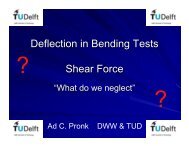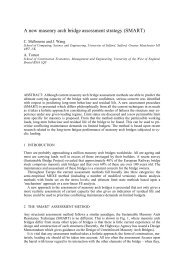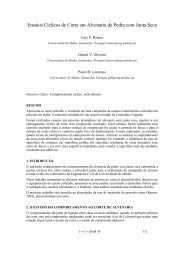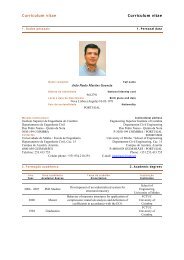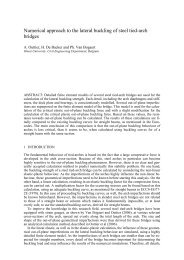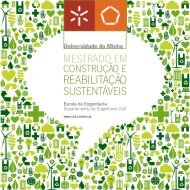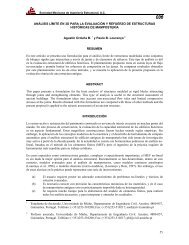Sustainable Construction A Life Cycle Approach in Engineering
Sustainable Construction A Life Cycle Approach in Engineering
Sustainable Construction A Life Cycle Approach in Engineering
Create successful ePaper yourself
Turn your PDF publications into a flip-book with our unique Google optimized e-Paper software.
Because of all possible comb<strong>in</strong>ations of <strong>in</strong>dividual characteristics and requirements of the build<strong>in</strong>gs<br />
it may happen that two, at the first glance similar, build<strong>in</strong>gs have very different optimal solutions.<br />
The proposed decision model, as already stated <strong>in</strong> <strong>in</strong>troduction, can only be used for build<strong>in</strong>gs<br />
that are publicly owned. One of their ma<strong>in</strong> features is the fact that they normally do not go on<br />
sale on the open market. The <strong>in</strong>crease of their market value after retrofitt<strong>in</strong>g is therefore not important.<br />
Consequently we are, from the f<strong>in</strong>ancial perspective, primarily <strong>in</strong>terested <strong>in</strong> what will<br />
be the cost of capital ma<strong>in</strong>tenance, rout<strong>in</strong>e ma<strong>in</strong>tenance and adm<strong>in</strong>istration throughout a predef<strong>in</strong>ed<br />
period. Further, one is <strong>in</strong>terested also <strong>in</strong> capital ma<strong>in</strong>tenance costs related benefits.<br />
There are three major types of benefits associated with retrofitt<strong>in</strong>g of the publicly owned build<strong>in</strong>g.<br />
First type of benefit is associated with energy rehabilitation of the build<strong>in</strong>g. The aim of<br />
energy rehabilitation is to consume less energy for heat<strong>in</strong>g, cool<strong>in</strong>g, ventilation and other types<br />
of energy related processes.<br />
Second type of benefit is more difficult to determ<strong>in</strong>e. This benefit appears at the occurrence of a<br />
natural disaster (e.g. earthquake), if the build<strong>in</strong>g is appropriately re<strong>in</strong>forced for the certa<strong>in</strong> type<br />
of natural disaster. The extent of the damage done by a potential natural disaster for two cases;<br />
un-retrofitted build<strong>in</strong>g and retrofitted build<strong>in</strong>g has to be assessed <strong>in</strong> the model. The difference <strong>in</strong><br />
damage is equal to the benefit we receive from <strong>in</strong>vestment <strong>in</strong> strengthen<strong>in</strong>g the build<strong>in</strong>g. In addition<br />
to direct damage to the build<strong>in</strong>g, <strong>in</strong>direct damage, such as number of days the build<strong>in</strong>g is<br />
not applicable, the cost of temporary relocation to another location, etc, can also bi considered.<br />
Third type of benefit is associated with the <strong>in</strong>creased value (but not market value) of the build<strong>in</strong>g<br />
due to its renewal (<strong>in</strong>vestment). Each build<strong>in</strong>g has, irrespective of its purpose, a certa<strong>in</strong> value<br />
<strong>in</strong> terms of <strong>in</strong>built material and equipment. As the proposed model only compares different<br />
solutions for a s<strong>in</strong>gle build<strong>in</strong>g, we do not need to know the total value of the <strong>in</strong>built material and<br />
equipment of the build<strong>in</strong>g. The value of the potential <strong>in</strong>vestment is the only <strong>in</strong>terest, as the value<br />
of already built <strong>in</strong> material and equipment is the same <strong>in</strong> all cases. Benefits of newly <strong>in</strong>tegrated<br />
materials and equipment are already considered <strong>in</strong> the above-mentioned criteria (energy conservation,<br />
seismic safety), but only for the time frame of the analysis. As a consequence, the <strong>in</strong>itial<br />
value of the material can not be considered. Only the value of the material after the time frame<br />
of analysis affects the solution. With consider<strong>in</strong>g these values <strong>in</strong> the decision model we ensure<br />
that the benefit/value of each material is accounted over its entire lifetime, not only for the time<br />
frame of the analysis.<br />
To summarize, the decision model takes <strong>in</strong>to account the follow<strong>in</strong>g <strong>in</strong>formation/criteria:<br />
• Cost of rehabilitation of the build<strong>in</strong>g and its energy-related and possible other benefits.<br />
• Costs and benefits related to improved seismic safety.<br />
• The residual value of <strong>in</strong>vestment measures after the time frame of analysis.<br />
The values of selected criteria must be determ<strong>in</strong>ed as precisely as possible. In order to achieve<br />
this, we have to carry out the follow<strong>in</strong>g steps:<br />
• Determ<strong>in</strong>e the build<strong>in</strong>g’s current state.<br />
• Consider all possible solutions for retrofitt<strong>in</strong>g the build<strong>in</strong>g.<br />
• Estimate the costs of all planned <strong>in</strong>vestments.<br />
• Estimate the costs of ma<strong>in</strong>tenance and management of the build<strong>in</strong>g.<br />
• Estimate all benefits that will arise as a result of planned <strong>in</strong>vestments.<br />
• Estimate the residual value of <strong>in</strong>vestment measures after the time frame of analysis.<br />
• Determ<strong>in</strong>e the appropriate discount rate.<br />
4 DECISION MODEL<br />
If the proposed decision model is to obta<strong>in</strong> objective and reliable results, values of all selected<br />
criteria must be objectively evaluated. When the values of costs and benefits of all criteria are<br />
determ<strong>in</strong>ed they must appropriately aggregated <strong>in</strong>to the f<strong>in</strong>al result. This needs to be done for<br />
every potential solution.<br />
S<strong>in</strong>ce <strong>in</strong> the decision model considered costs and benefits will not appear at the same time all<br />
future values must be translated <strong>in</strong>to present values. This is done by us<strong>in</strong>g discount<strong>in</strong>g with<br />
which we get net present values for all future costs and benefits and consequently net present<br />
values for all criteria. At the end of the analysis obta<strong>in</strong>ed values of all criteria are summed up<br />
93


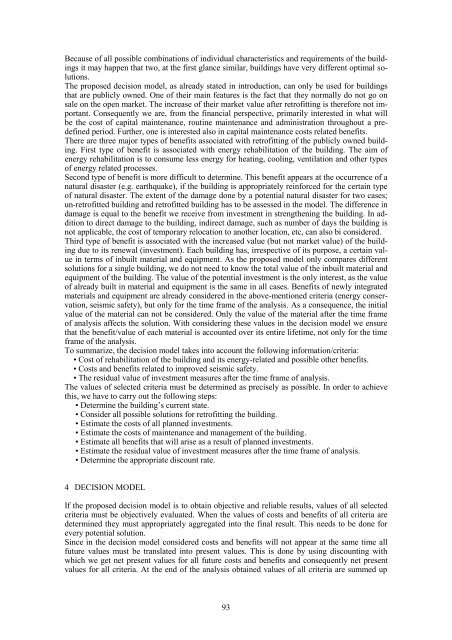
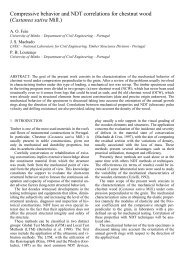
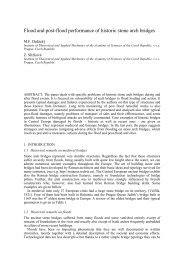
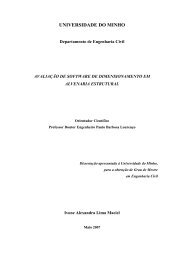
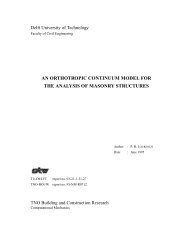

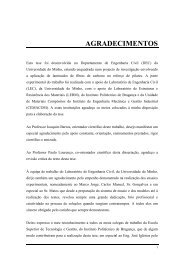

![Weibull [Compatibility Mode]](https://img.yumpu.com/48296360/1/190x134/weibull-compatibility-mode.jpg?quality=85)
